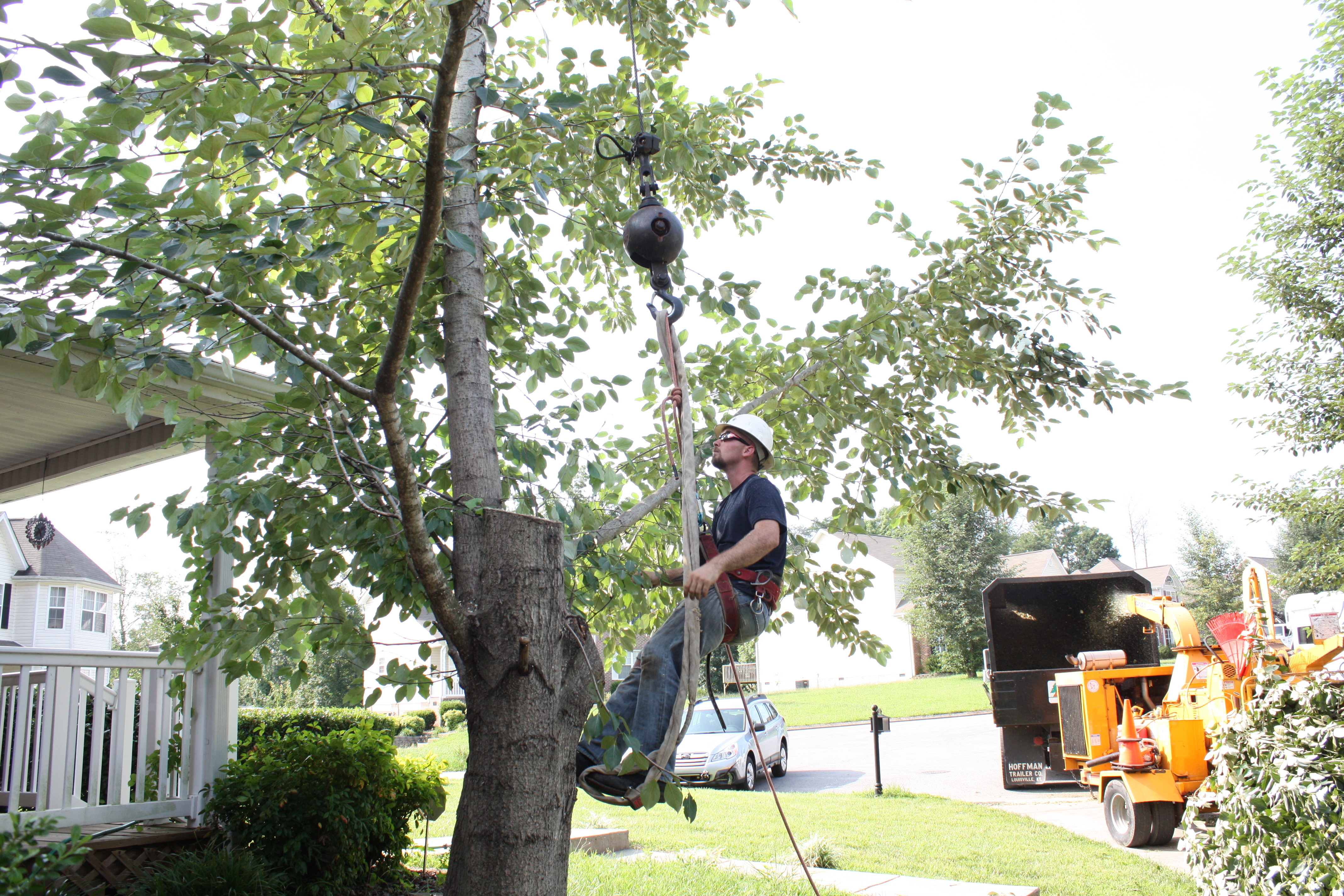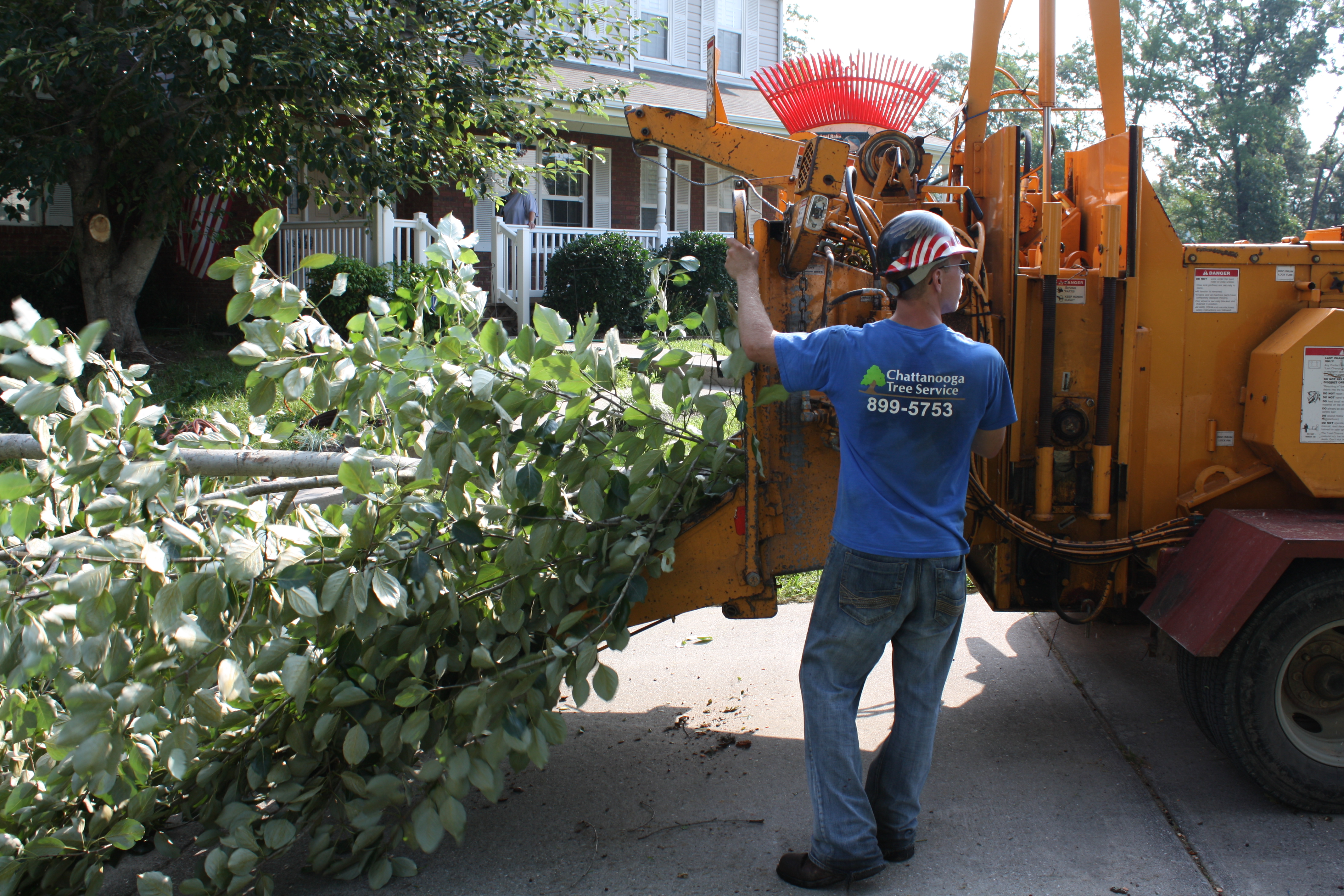Last weekend's 5-plus inches recorded at Chattanooga airport - including a record-breaking 2.21 inches on July 7 that topped the 1928 daily high of 2.11 inches - had gardeners worried that this season's vegetables and flowers might be a washout.
But local professionals - who are getting swamped with those calls - say the benefits of the rains outweigh problems. In fact, says UT Hamilton County Extension Agent Tom Stebbins, the rains of last weekend and this week will ultimately save cash on water bills since homeowners won't have to water their gardens again for at least one month and possibly two.
"We were really lucky. They were slow, soaking rains, which we haven't had too much of," says Stebbins. "We've had an ongoing drought in our area for at least 10 years. People think that number doesn't sound right because we get pretty good rains in spring, but then it usually shuts down in June until fall. Trees have suffered, and they are definitely benefiting from the rain."
John Pratt, owner of Chattanooga Tree Service, says tree damage from the torrential rain wasn't as bad as it might have been because there was little wind.
"Due to tornadoes in the last few years, drought and pine beetles, most of the weak trees have already come down," Pratt explains.
But the rains weren't entirely beneficial - just ask residents of South Pittsburg - so Stebbins, Pratt and Donna Mahan at AAA Basement Waterproofing Systems share a homeowners' checklist of potential problems the rains may have caused in your garden, backyard or basement and ways to correct them.
IN YOUR GARDEN
The bad news: Flowers and gardens planted in low-lying areas are susceptible to root rot.
"They are definitely going to see fungal leaf spot; we're already seeing it on tomatoes," Stebbins says. "People say their tomatoes are dying, but it's leaf spot making the leaves curl up."
Stebbins says in order to tell whether leaf spot has infected your plant, check for "little black spots that look like measles."
The good news: There are two ways to correct the problem, says Stebbins. First, do nothing.
"It will get dry in the next few weeks. Infected leaves will probably drop off and the plant will put out more leaves and be fine in the summer," he says.
Because of the higher-than-normal amount of rain, Stebbins advises not to turn on sprinklers and other overhead irrigation because that brings on leaf spot.
The second option for leaf fungus, he says, depends on the number of leaves infected. If the number is large, he suggests a fungicide spray, which can be purchased at garden centers.
"It's not going to cure the fungus, but will protect new foliage. You want to protect the new growth, flowers and leaves, that comes out on shrubs and plants.}
The bad news: Excessive rain may cause cracking on tomatoes.
"When we have rain like this, we'll see a lot of fruit cracking, because they grow so fast during this period of time," Stebbins says.
He advises you gather any rotted vegetables or fruits and get them out of the garden.
"Gather them up, throw them on the compost. Don't leave them on the vine because that encourages more rot."
The good news: It's not to late to start over.
"You can plant tomatoes right now and still get a nice crop of tomatoes because they'll take advantage of this nice moisture in the ground. If your tomatoes suffered really badly, I'd say pull those plants out, get starts and replant."
The bad news: Some blooms on flowering shrubs and plants were shattered by the force of the rain.
The good news: They'll grow back with pruning, especially roses, says Stebbins.
"You can cut roses back to the first five-leaf cluster. I wouldn't hesitate to cut them back to a good size. Let them start up again," he says. "With zinnias, petunias, daisies and daylilies, you can deadhead. Never deadhead when plants are wet as that can spread fungi."
IN YOUR YARD
The bad news: The abundance of pine trees in this region has homeowners worried about heavy rains bringing them down since pines are reputed to topple easily due to shallow root systems.
The good news: Pines are taking a bad rap.
"The biggest risks are trees that are leaning or are double-forked (two trunks from one stump) because they have all that weight out to one side and gravity pulls them down," says Pratt. "If I have two trees in my yard - one a hardwood leaning toward my house and the other a pine that's straight - I'd cut the leaning one first."
To determine whether a tree is at risk of falling, check to see whether the "ground is raised around it," Pratt says, a sign that roots are lifting upward and are no longer firmly anchoring the tree in the ground.
IN YOUR BASEMENT
The bad news: Last weekend's rains resulted in flooded basements and crawlspaces.
The good news: Recurrences can be prevented, but for now you are dependent on a waterproofing company to correct the situation. Check with the Better Business Bureau for company references and your insurance agent to see what your coverage will pay.
If water just caused streaking on your basement's block foundation, Mahan says that's a heads-up of impending problems. Discoloration and odor are signs of long-term water problems, she says.
"When the ground around the foundation becomes saturated, dirt becomes so heavy it leans against block walls, resulting in hydrostatic pressure. Over time, with the weight of wet soil, moisture will seep through."
To prevent further water damage, Mahan has three suggestions.
• Check gutters and downspouts. "The rule is 'The higher the pitch of a roof, the wider the gutter needs to be.'"
• Add downspout extensions that run 10 to 20 feet away from the foundation wall. This will keep gutter water away from foundation walls.
• Grade and slope the soil around foundation walls away from the house to prevent pooling. Mahan says compact red clay works best and keep the clay a minimum of 4 inches below the wood surface.
Other signs of excessive moisture throughout a home are sweating windows, bowing of hardwood floors and bowing or cracks in basement walls, Mahan says.
If a problem is ignored, some form of bacterial growth will form on concrete block/monolithic walls. This moisture, combined with organic substances such as wood, paper or furnishings stored in a "damp" environment, is a recipe for bacterial growth, she says.
Mahan says it's also important that homeowners check crawlspaces after heavy rains.
"Standing or pooling of ground water will create a very high humidity environment. Per the EPA, a good/safe humidity reading is 45 to 50 percent; any reading above that range can cause bacterial growth to spread throughout the crawlspace.
"Eighty percent of the air we breathe is vented from the crawlspace. Water damage to the HVAC unit is very costly. Take care of water problems and keep the crawlspace dry to save money and breathe cleaner air," says Mahan.
Installing a sump pump or, if you already have one, making sure it's working correctly are good ways to remove water from the crawlspace and keep it from building up again.
Contact staff writer Susan Pierce at spierce@timesfreepress.com or 423-757-6284.


